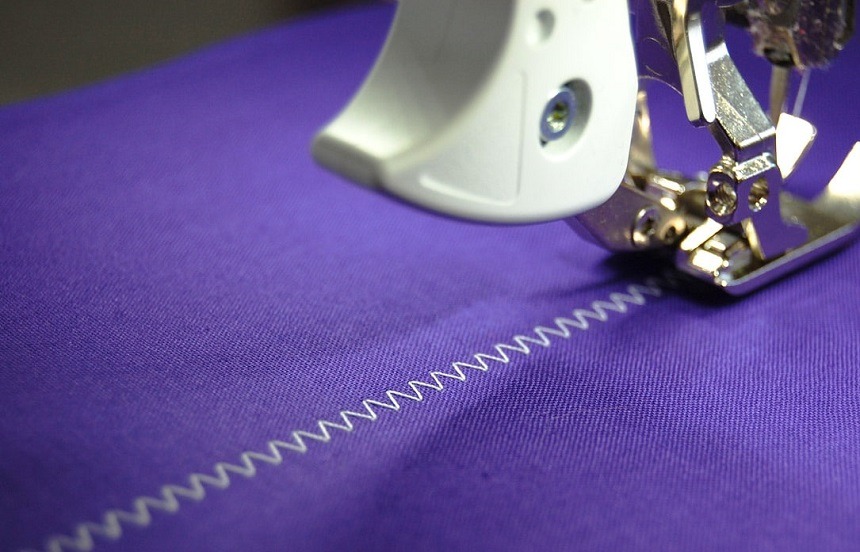Nahttypen: Ultimate Guide to Seam Types in Sewing and Textile Design
In sewing, fashion, and textile design, seams are more than simple stitches—they are the backbone of every garment and fabric-based project. The term Nahttypen is the German word for “seam types,” and it encompasses the variety of ways in which fabric pieces are joined together. From basic construction to intricate decorative techniques, understanding Nahttypen is essential for creating durable, functional, and visually appealing products.
Whether you are a beginner exploring sewing for the first time or a professional designer crafting high-quality apparel, mastering Nahttypen is a crucial step in your creative journey. This guide explores the different seam types, their construction, applications, advantages, and common mistakes to avoid.
Understanding Nahttypen
Nahttypen is a German term meaning “types of seams.” In sewing, tailoring, and textile production, it refers to the various techniques used to join pieces of fabric together. Each seam type has its own structure, purpose, and influence on the final textile or garment, impacting both functionality and aesthetics.
Seams do more than hold fabric together—they affect strength, durability, comfort, and overall appearance. Having a solid understanding of Nahttypen is crucial for anyone aiming to create professional-quality garments, accessories, or textile products.
What Are Nahttypen?
Nahttypen refers to the various types of seams used in sewing, tailoring, and textile manufacturing. Each seam type has a unique purpose, whether it is to provide strength, flexibility, aesthetics, or a combination of all three.
The primary aspects that define a Nahttyp include:
- Construction Method: How the fabric edges are joined—by hand or machine, folded, overlapped, or stitched edge-to-edge.
- Purpose and Function: Whether the seam is intended for durability, stretchability, waterproofing, or decorative effect.
- Strength: How much stress or strain the seam can withstand without failure.
- Finish: The way raw edges are treated to prevent fraying and enhance appearance.
By understanding these elements, sewists and designers can make informed decisions about which seam to use for a given project, fabric, or garment style.
How Nahttypen Works
Nahttypen functions by structuring the connection between fabric pieces so that the seam meets both practical and aesthetic needs.
- Preparing the Fabric: Pieces are cut according to the pattern and aligned correctly, often with right sides facing each other for most seam types.
- Stitching: Depending on the seam type, stitching may be straight, zigzag, double, or enclosed, each creating different levels of strength and flexibility.
- Finishing Edges: Raw fabric edges can be trimmed, enclosed, reinforced, or left as-is, depending on the seam’s purpose. Proper finishing prevents fraying and extends the life of the garment.
- Reinforcement (Optional): Some seams, such as flat-felled or lapped seams, include extra stitching or folds to enhance durability.
- Final Appearance: The seam contributes to both the garment’s structure and its look. For example, French seams are hidden for a neat finish, while flat-felled seams may be visible and decorative.
Why Seam Types Matter
Choosing the correct seam type is fundamental for achieving quality and longevity in garments or textile products.
- Durability: Properly constructed seams prevent tearing, fraying, or garment distortion.
- Comfort: Seams influence how a garment feels against the skin; flat seams reduce irritation in activewear.
- Aesthetics: Decorative seams can elevate the visual appeal of a design, creating professional-looking finishes.
- Functionality: Specialized seams can make garments waterproof, flexible, or stretchable depending on the intended use.
Incorrect seam selection can result in puckering, uneven surfaces, premature wear, or compromised garment functionality. Understanding Nahttypen ensures both practicality and style in every sewing project.
Why Nahttypen Matters
Choosing the correct seam type is essential because it:
- Enhances durability: Seams hold garments together and withstand daily wear.
- Improves comfort: Properly constructed seams reduce bulk and irritation.
- Prevents fraying: Finished seams ensure fabrics do not unravel.
- Elevates aesthetics: Seam choice impacts the overall visual appeal of the garment.
By selecting the appropriate Nahttyp for your fabric and project, you can ensure that the finished product is both functional and visually appealing, meeting your design goals while standing the test of time.
Decorative and Specialty Nahttypen
In addition to core seams, decorative and specialty seams add flair to garments and textile products. Examples include piped seams, welt seams, and embroidered seam finishes. These techniques not only enhance aesthetics but can also reinforce the fabric when used strategically.
Choosing the Right Nahttypen for Your Fabric
Selecting a seam requires careful consideration of:
- Fabric Weight: Heavy fabrics like denim require reinforced seams, whereas lightweight fabrics benefit from enclosed seams.
- Stretch: Knit fabrics need flexible seams like overlock or zigzag to accommodate movement.
- Garment Function: Activewear, outerwear, and luxury fashion each have different seam requirements.
- Aesthetics: Some seams are meant to be visible and decorative, while others are hidden for elegance.
Testing on scrap material is a practical way to determine how a seam interacts with your fabric before committing to the final project.
Common Mistakes to Avoid
Even experienced sewists encounter pitfalls when working with Nahttypen:
- Using the wrong seam type for the fabric
- Incorrect seam allowance, leading to weak or uneven seams
- Ignoring thread tension or needle type
- Failing to prewash fabrics, causing shrinkage or distortion
- Neglecting seam finishing, resulting in fraying or reduced garment lifespan
By being mindful of these errors, you can ensure professional-quality results.
Maintenance and Longevity
Proper maintenance of seams and garments enhances durability:
- Regularly inspect seams for wear or fraying
- Wash according to fabric and seam type requirements
- Use gentle detergents and avoid harsh chemicals
- Keep sewing tools in optimal condition for consistent stitching quality
Real-World Applications of Nahttypen
Nahttypen are not limited to fashion—they are critical across multiple industries:
- Fashion: Everyday wear, couture, and high-end garments
- Sportswear: Stretch seams for flexibility and comfort
- Outdoor Gear: Lapped and sealed seams for waterproofing
- Furniture & Upholstery: Durable seams for longevity
- Automotive: Seat stitching and interior fabrics
Selecting the right seam ensures products meet both functional and aesthetic demands in any field.
Conclusion
Nahttypen are fundamental to sewing, fashion design, and textile manufacturing. Understanding the various seam types allows you to create garments and products that are strong, comfortable, and visually appealing. From the simplicity of a plain seam to the durability of a flat-felled or lapped seam, each Nahttyp has a unique role to play.
Whether you are a beginner learning your first stitches or a professional refining your craft, mastering seam types empowers you to elevate your work, improve longevity, and achieve professional-quality results.
By combining knowledge, practice, and creativity, you can harness the full potential of Nahttypen to bring your textile projects to life with style, precision, and durability.
FAQs About Nahttypen
What is the strongest seam type?
The flat-felled seam is one of the strongest, ideal for heavy-duty fabrics and workwear.
Can overlock seams be made without a serger?
Possible, but results may be less neat. A serger is recommended for professional finishes.
Which seams are best for stretchy fabrics?
Zigzag and overlock seams provide flexibility and durability.
Do decorative seams serve a functional purpose?
Yes, they can enhance strength while adding aesthetic value.
Why is seam finishing important?
Proper finishing prevents fraying, improves comfort, and extends garment life.






